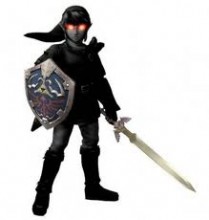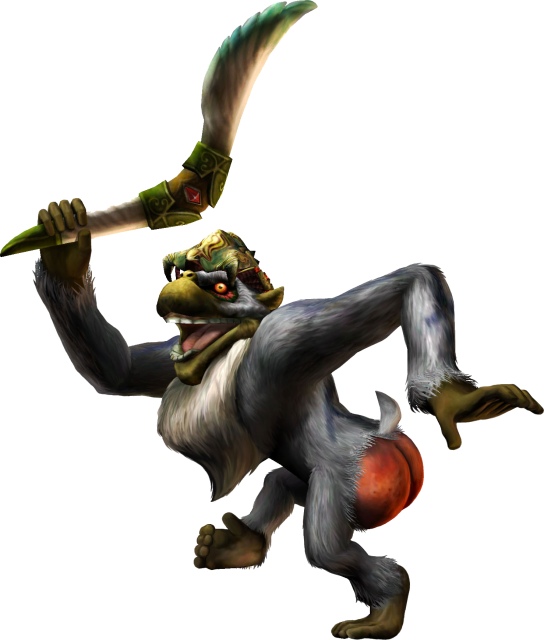The Best and Worst of Zelda: Mini-Bosses
Posted on October 22 2013 by Brian Frost
 Hello readers! Brian here with the twelfth edition of “The Best and Worst of Zelda.” This topic has been frequently requested, but most recently by a user named JeredenDonnar, so thanks to everybody for their comments! Don’t forget to write a suggestion for next week’s topic in the comment section.
Hello readers! Brian here with the twelfth edition of “The Best and Worst of Zelda.” This topic has been frequently requested, but most recently by a user named JeredenDonnar, so thanks to everybody for their comments! Don’t forget to write a suggestion for next week’s topic in the comment section.
Mini-bosses tend to remain unjustly forgotten. Sure, the dungeon boss is important for a climactic and memorable finish, but mini-bosses retain a very different kind of importance. They maintain the flow of the dungeon by adding exciting combat to slower-paced puzzle solving, they make for interesting enemy design, and they offer mid-dungeon challenges often resulting in new, useful items. We’ll be judging them today similarly to how we have judged bosses in the past; by design, atmosphere and quality of combat. That all being said, let’s get right to it!
It’s a rare occurrence, but there are times that I find a mini-boss more interesting, more exciting, or just more memorable than a dungeon boss. I think many people would agree with me when I say that Ocarina of Time‘s Dark Link is surely one of these occurrences. Who doesn’t love Dark Link? The debonair shadow of the hero has always been a fan-favorite. The setting of the battle is unexpected; it’s seemingly outdoors, for one, and eerily vast. I’ve often said there’s power in subtlety, and this huge area of basically nothing is so fitting for the battle of Dark Link. The enemy design is also quite simple, but obviously well-received by the Zelda fan base. Dark Link is cool, and despite how little that should mean, in this case it means everything. The concept of a dark version of the main character actually fighting the main character is decently interesting, and for many people, that was more than enough of a reason to love Dark Link. The fight itself is fairly difficult, with “sword-fight to the death” being the obvious theme. When I think “Water Temple,” after frightening images of iron boots and Triforce symbols go through my mind, I think of Dark Link. Morpha, the dungeon boss, is the last thing I think about. For once, the dungeon boss was overshadowed by the mini-boss.
Another good example of this comes at the beginning of Twilight Princess, where the game’s semi-tutorial Forest Temple introduces the players to unhappy monkeys in search of liberation. I’ve always been a fan of this dungeon; I’ve played through it about five times, and I always enjoy seeing those adorable monkeys, but the truth is, if you were to ask me about the dungeon’s boss, I’d be at a loss for words. I remember next to nothing about Diababa, but yet I can remember nearly every gesture made by Ook the baboon. The room in which you fight Ook is thematically well-designed. A circle of pillars lie in the center of a very woodsy room with a bit of light shining in, as Ook taunts you with his colorful rear end. Probably my favorite thing about Ook was that he actually used the Gale Boomerang, the item he later leaves behind. Similar to the mini-boss that uses the ball and chain in Snowpeak, you actually get to see the item in use before you win it in an epic battle. With a lack of interesting items at this point in the game, the mini-boss depends on rolling as the main battle tactic. It was a risky choice, considering there’s nothing particularly exciting about rolling head-on into pillars, but I’ll admit, for these five minutes of the game, rolling was the most brilliant mechanic ever invented. In all seriousness, it was a very smart way to make something so simple into something purely fun.
But of course, there are times when a Zelda game really just misses the mark. Here I’m not speaking of any specific game, but rather a concept I’m sick and tired of. I don’t want to see any more regular enemies as mini-bosses. I really don’t! The Wind Waker and Skyward Sword are guilty on multiple occasions of making this mistake, and it really bothers me. Everything is set up perfectly for an awesome mini-boss; you’ve scaled the mountain, you need an item, Medli is in distress, and you walk in to an epic arena. Your challenger: moblins… You were so close to getting it right, Nintendo. So, so close, but you forgot one thing: The mini-boss. Moblins are not mini-bosses by any means, and I was legitimately bothered by the fact that they were considered one. Similarly, a stalfos is used as the first mini-boss in Skyward Sword, and although at the time I wasn’t so peeved by the concept, I realize the potential to make something better was certainly there. It’s just disappointing, and I suppose it won’t stop happening at any point in the near future, but I’d really prefer it if they put a little bit of extra time into designing unique mini-bosses for each and every dungeon.
Still, I believe The Wind Waker more than makes up for its shortcomings with some really great late-game mini-bosses. To be more specific, my favorite would most definitely be Phantom Ganon. Let me begin by saying this is a form of combat I am absolutely tired of, as every game has some boss who just wants to play tennis with you. It’s getting old very quickly, but what I liked hear was it’s similarity to the Ganondorf battle in Ocarina of Time. Sure, it’s merely emulating the same combat we saw in A Link to the Past, but that being said, I personally felt it had not yet become overused into oblivion. What I liked about Phantom Ganon was build-up; you fight him first at the Forsaken Fortress after going to Hyrule for the first time, where the battle is very quick but far from forgettable. He’s a strange, evil-looking phantom who seems to go down pretty easily, but after completely maxing out your Master Sword’s power, you find that this is not the case. Phantom Ganon returns, and that alone made me jump for joy. I really felt I had been gipped of a good battle at the Forsaken Fortress, but battling Phantom Ganon in Ganondorf’s Castle is nothing short of epic. Watching the sword fall and point at a different room in the maze, killing off the phantom clones, and even the magic tennis felt fast-paced and exciting. The maze was an interesting choice as a setting, but it gave the player this feeling that he/she would be lost forever if they could not defeat this wretched phantom. And of course, that moment where you pick up his sword, and slash your way into the next part of the castle is purely awesome!
Skyward Sword also has some much better mini-bosses after the game’s half-way point, often very unique thematically and atmospherically. Both of these aspects are shown off well on the Sandship, where we meet an undead pirate by the name of Scervo. Looking solely at the enemy, he’s rather uninspiring. A humanoid, of which there are quite a few in Skyward Sword, and a skeleton resembling a stalfos. Oh, right, he also has a pirate hat. He looks pretty brutal, but not too different from the majority of enemies in the game. But here’s the issue, despite its undoubted similarities to many other enemies, this is the dungeon in which it fits best. I don’t necessarily understand why there are skeletons running around Skyview Temple, but I do understand why there’s one here on the abandoned pirate ship from long ago. The setting is very odd, with two-dimensional limited motion due to the narrowness of the plank. Notice the theme of the pirate ship becoming even more prominent, as you must force Scervo (whose name likely comes from ‘scurvy’) to “walk the plank.” It takes place outdoors, looking over the vastly beautiful sand sea, and the view is honestly astonishing. The battle is simple in nature, not too difficult, but certainly memorable in my book. If only the poor swabbie hadn’t been over-shadowed by Tentalus, who who have felt less out of place in Monster’s Inc.
Well, that’s all we have for this week! Be sure to check back every Tuesday at 11:00 AM Central Time for more. Leave your ideas for next week below, and as always, thanks for reading!





